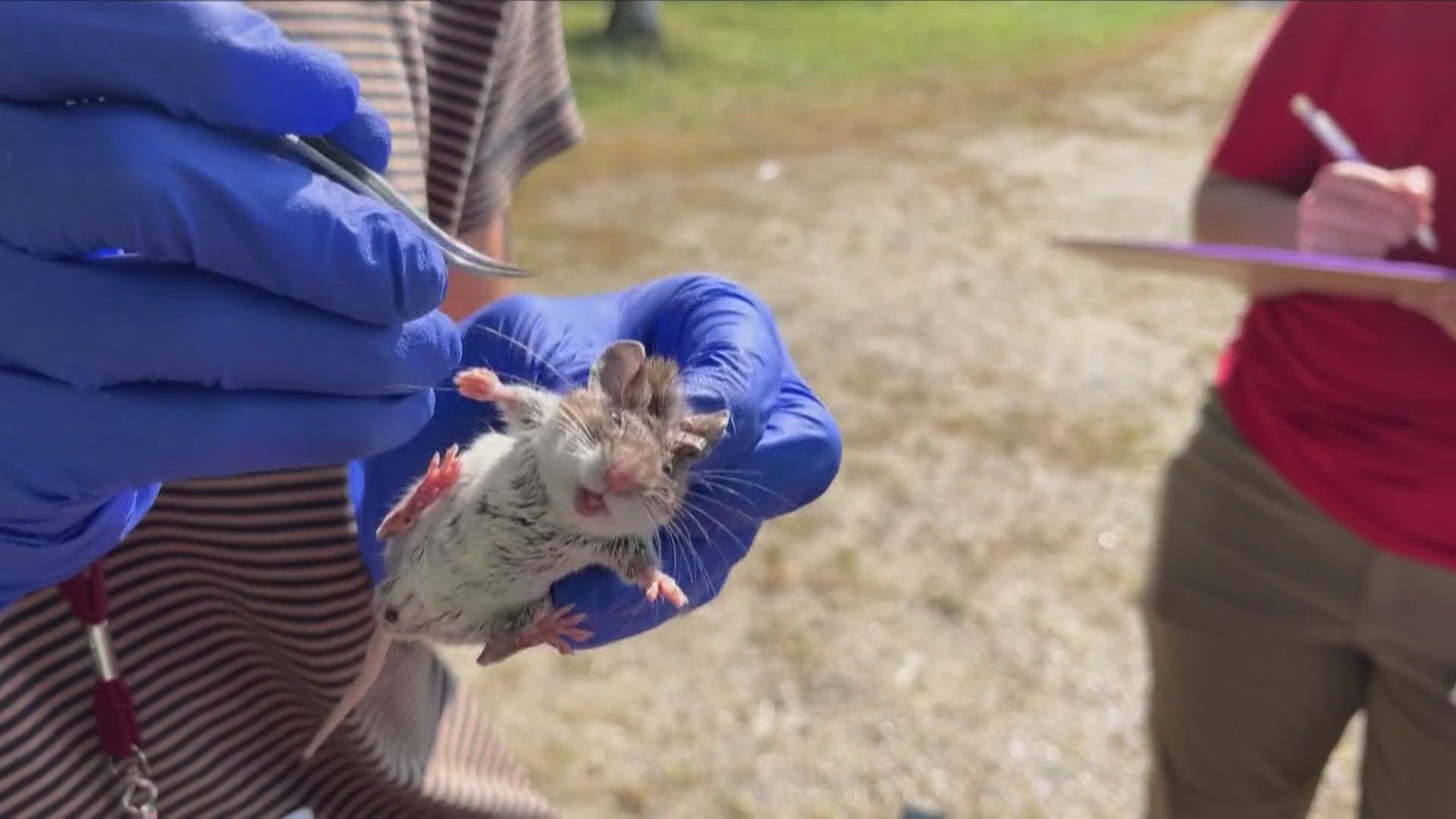CAPE ELIZABETH, Maine — You're probably on the lookout for ticks carrying diseases in the summer, but adult deer ticks are active in the fall.
Experts say the parasites carry more pathogens that cause Lyme and other diseases, like the Powassan virus.
Powassan can be deadly in one of ten people. The Maine Center for Disease Control and Prevention has reported three cases of Powassan so far this year, including one death of an 81-year-old man from York County.
That's why researchers in Maine are trying to determine which animal species are helping spread the tick-borne infection.
Scientists initially thought the Powassan virus was transmitted by deer ticks on white-footed mice, the primary carrier of the bacteria that causes Lyme disease.
"We can't find the powan virus in white-footed mice, and we haven't found it yet; we are looking at other animals," Rebecca Robich, a Research Scientist at Maine Health Institute of Research, explained.
Robich is leading a team trying to figure out if other small species like shrews and voles are helping spread the virus. Field Biologist Molly Meagher and research assistant Curtis Bartiromo examine voles pulled from dozens of traps put out by researchers in a wooded area. After the animals are weighed and measured, they check for ticks.
"I tend to look for ticks around the ears, around the whiskers, around the eyes. We carefully pull them if there are ticks," Meagher said.
Ticks found on the animals will be tested for Powassan. Researchers also take tissue samples to test for the virus and other pathogens. Each species is also tagged in the ear.
"If the animal were to be clean from the diseases we look for and then get it later, we would know by the tag number," Meagher added.
While Powassan is not as common as Lyme, cases are rising in Maine. Powassan can be fatal and can leave those who survive with long-term neurological problems. No treatment is available to cure the Powassan virus, though doctors may treat symptoms of the illness.
Furthermore, a tick must be attached for 24 to 48 hours to transmit the bacteria that causes Lyme disease, but that's not the case with Powassan.
"Powassan lives in the salivary glands of the tick that you may get on you in the fall -- they can transmit within 15 minutes of an attachment," Robich warned.
Researchers also look for ticks in areas with native and invasive plants, such as the Japanese barberry.
Robich says ticks on animals near plants may have a greater chance of carrying Powassan.
"It's a great habitat for small animals. They are protected. It has thorns, bigger animals can't get to them, ticks love it," Robich added.
Scientists also believe the virus in Maine is transmitted primarily by deer ticks, not infected woodchuck ticks.
The team's findings are expected to be released within the next six months to help Mainers better understand how to protect themselves and their pets.

